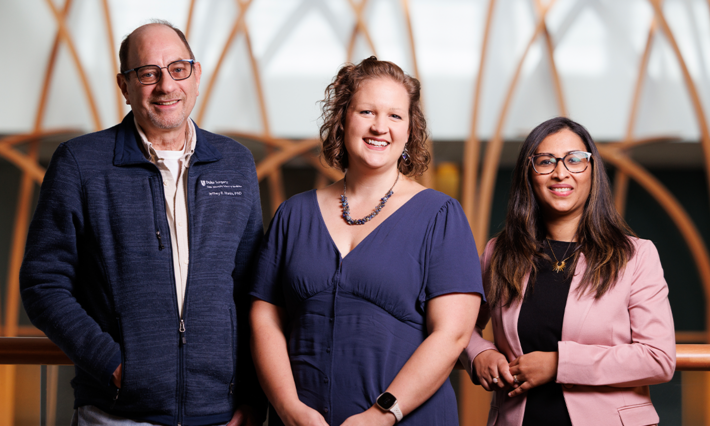There are many extraordinary nurses at Duke University Hospital who go above and beyond every day to provide incredible care for our patients, their loved ones and each other. Duke University Hospital administrators are especially proud when they're able to officially recognize them for their efforts.
Duke University Hospital has recently partnered with The DAISY Foundation to provide ongoing recognition of the remarkable clinical skill and compassion that Duke nurses deliver all throughout the year.
Nurses are nominated by anyone in the organization who experiences or observes extraordinary compassionate care being provided by a nurse — patients, family members, other nurses, physicians other clinicians and staff. DAISY Award honorees receive a certificate, a DAISY Award pin for their ID badge, a hand-carved serpentine stone sculpture from Zimbabwe and recognition on the DAISY website.
Last month DUH honored its inaugural award recipient — Taylor Jones, RN, CNI, a nurse on the surgical oncology floor, Unit 6300.
One of her patients shared this tribute to Taylor: “I had a mastectomy and a double flap (breast) reconstruction. It was a very extensive surgery, and I was in a lot of pain afterwards. Taylor not only did her duties as a nurse, but she also went above and beyond her duties with her compassion. When I was sick, she stayed with me and helped me until I was better. She constantly checked on me and made sure I was OK during her shift. She is a very skilled nurse and provided me with excellent care."
The DAISY Foundation was established in 1999 by the family of Patrick Barnes. At the age of 33, Patrick died of complications of the auto-immune disease ITP. The Barnes family wanted to do something positive to honor Patrick's memory and the nurses who provided such compassion and kindness to him.
DAISY stands for Diseases Attacking the Immune System, and the DAISY Award® for Extraordinary Nurses recognizes nurses who go above and beyond and make extraordinary differences in the experiences of patients and their families.




